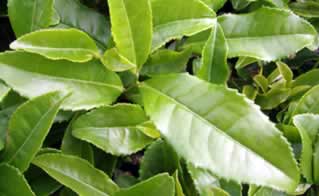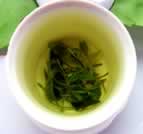The polyphenols found in green tea has been found to possess anti inflammatory benefits and anti oxidant properties. These combined activities of green tea benefit the body by fighting free radicals that damage the cells that is the cause of aging and many health problems.
The antioxidant protective benefit of green tea is believed to prevent cancer and tumor formation.
Population based studies suggest that green tea posses anti cancer benefits. It has been observed that the rate of cancer from countries that consume green tea is lower than those that did not take green tea. Although it is not definitive that green tea is solely responsible but it has presented a curious occurrence that merited further investigation.
In the Journal of Nutrition and Cancer, 1998, an article was published entitled “Green tea and cancer in humans: a review of the literature” that reported a review of researches that investigated the anticancer benefits of green tea. In their investigation, epidemiological and human studies have shown varying results. They have found out that among five studies on colon cancer, one reported a positive result while three found an inverse association. Among studies for rectal cancer, only one of four reported an inverse association while there are increased risks in the results of two of the studies. For urinary bladder cancer, two of two studies reported an inverse association. For stomach cancer, six out of 10 reported inverse while three reported positive association. For pancreatic cancer, two out of three reported inverse association. In lung cancer studies, there is a reported increased risk and another reported an inverse association. The review recognized the limitations of the studies done for the anticancer benefits of green tea and further studies was recommended to establish green tea anticancer activity..
Anti Diabetes Benefits of Green tea
Traditional medicine suggests that green tea benefits patients with diabetes. Green tea has long been used to control blood sugar levels and is thought to provide promising health benefits for diabetics. In a couple of animal trials, green tea may prevent the development of type 1 diabetes.
In Biofactors, 2007 an article entitled “Green tea, anti-diabetic or diabetogenic: a dose response study” has reported that clinical trials were done in Seoul National University in Korea to investigate the anti diabetic benefits of green tea extract.
The study was conducted to clarify whether lower or higher dietary dose of green tea have benefits for the reduction of risk of type 2 diabetes. Three groups of male rats were fed with high fat diet; one group was given low concentration of green tea, the second, high concentration of green tea and the third as a control group. After 4 weeks feeding of experimental diets, serum fasting blood glucose was not decreased but relatively increased in both green tea fed groups compared to DBC group. Data of this study suggest that lower dose of green tea is insulinotropic when higher dose is hyperglycemic but hypolipidemic at least in this experimental condition.
Green tea prevents the development of Atherosclerosis
A study done in Atherosclerosis Research Center, Cedars-Sinai Medical Center and David Geffen School of Medicine at the University of California in Los Angeles, CA, USA. That was published in the Circulation Journal May 2004 reported that oxidative stress has been implicated in vascular injury and atherogenesis, and antioxidant treatment has shown favorable results in preclinical studies. The study evaluated the benefits of epigallocatechin gallate (EGCG), the main antioxidant derived from green tea, on evolving and established atherosclerotic lesions in hypercholesterolemic apolipoprotein E-null mice. Gathered data showed that antioxidant epigallocatechin gallate differentially reduces evolving atherosclerotic lesions without influencing established atherosclerosis in the apolipoprotein E-null mice.
Other population based studies suggests that the antioxidant benefits of green tea may help prevent atherosclerosis, particularly coronary artery disease. These studies are based on statistics gathered from large groups of people in a particular period of time that have different cultural background and eating habits.
Green tea lowers LDL cholesterol level.
Population based studies suggests that green tea benefits regular drinkers with lowered LDL if compared to those who do not drink green tea.
In a study done in Cardiovascular Institute, FuWai Hospital, Beijing China as published in American Journal of Clinical Nutrition, August 2011, entitled “Green tea intake lowers fasting serum total and LDL cholesterol in adults: a meta-analysis of 14 randomized controlled trials” reported that research was done to identify the relevance of green tea benefits in lowering the serum total cholesterol and the LDL cholesterol in adults. The study concluded that the administration of green tea beverages or extracts provided beneficial reductions in serum total cholesterol and LDL-cholesterol concentrations, but no effect on HDL cholesterol was observed.
Other animal studies suggest that the polyphenols in green tea prevent the absorption of cholesterol in the intestine and are expelled out instead of being absorbed.
Green tea benefits for Weight loss
In a clinical study published in the International Journal of Obesity September 2009 entitled “The effects of green tea on weight loss and weight maintenance: a meta-analysis,” it was reported that catechins or an epigallocatechin gallate (EGCG)-caffeine mixture found in green tea have a small positive effect on weight loss and weight management. The study further suggests that different outcomes of the effect of green tea on weight loss and weight maintenance have been reported in studies with subjects differing in ethnicity and habitual caffeine intake.
Other clinical studies suggest that weight loss benefit of green tea is attributed to its effect in boosting body metabolism and burning of fat.

 Green Tea (Camellia sinensis) has been traditionally used both as beverage and as a medicinal herb with many health benefits for over 2000 years in East Asia particularly from China.
Green Tea (Camellia sinensis) has been traditionally used both as beverage and as a medicinal herb with many health benefits for over 2000 years in East Asia particularly from China. 

